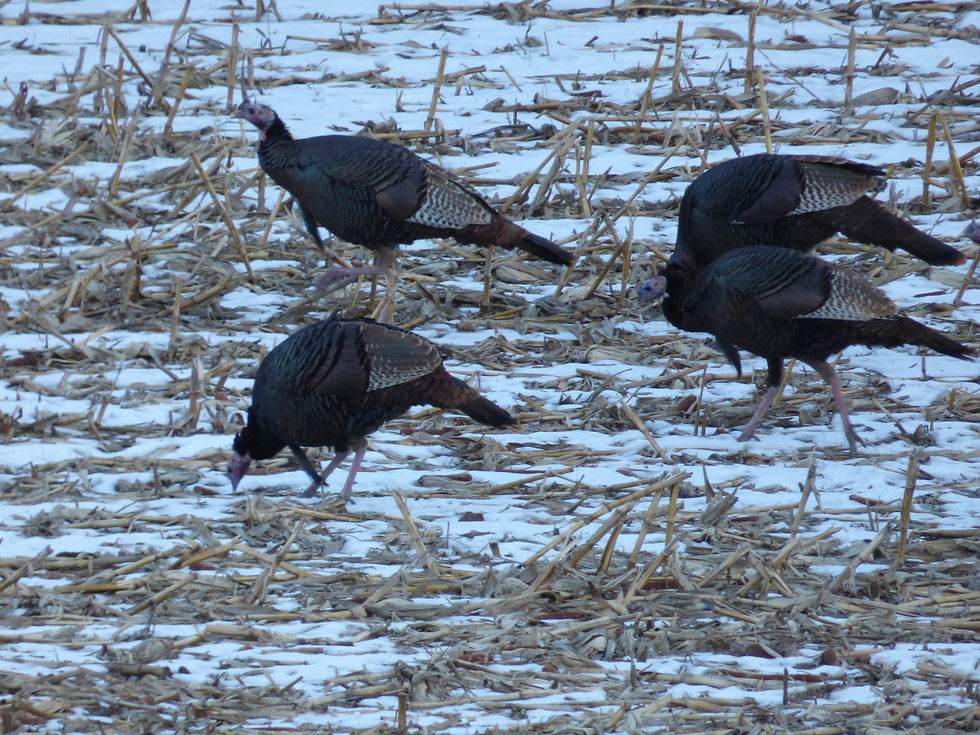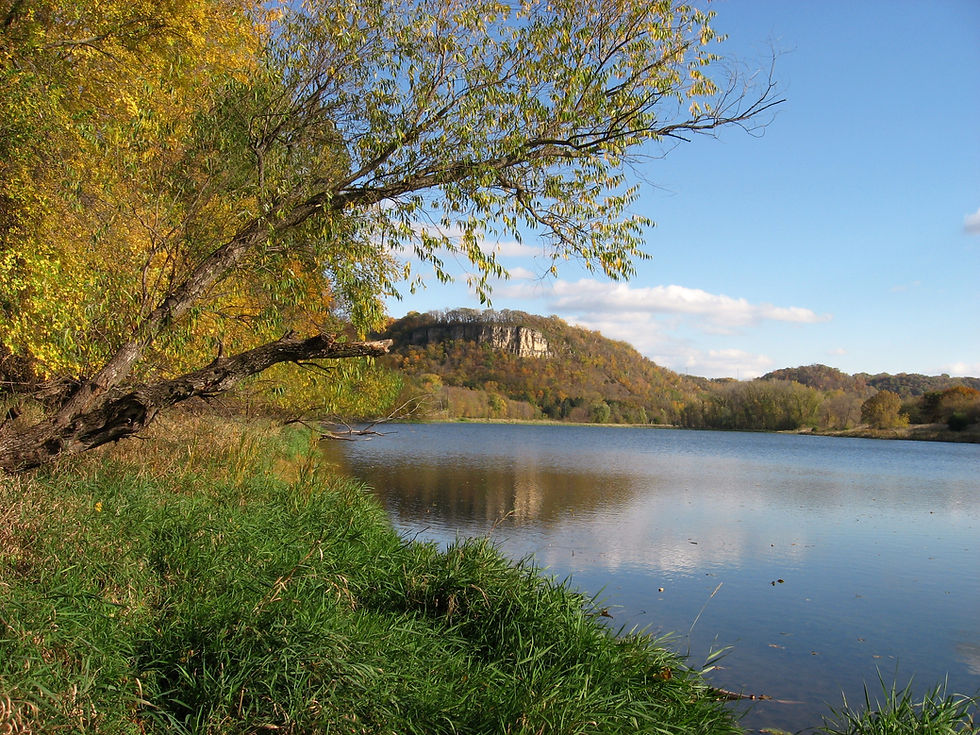"Adapting To Climate Change"
- wacoutanaturenotes
- Jan 31
- 3 min read
For those of us who enjoy and even thrive on the winter season, it has become obvious with the reality of climate change, adaptations are in order.
With two successive winters with no snow and above normal temperatures, I have adapted by putting my cross country skis in storage and putting on my hiking boots.

Fortunately for us living in the "Driftless Area" and specifically Wacouta, hiking opportunities are endless. The photos in this post were taken at the Head Of Lake Pepin. This photo was taken on January 6th and features a landscape void of any semblance of snow.

It seems like both December and January were unusually windy this season.
With northwest winds in excess of 60 mph. colorful ice slabs are pushed up onto shore.

I woke up on January 21st to a low temperature of minus 18 degrees and strong west winds, setting the stage for some beautiful displays of sea smoke.
Sea smoke occurs when very cold air moves over warm water, causing water vapor to condense into visible mist. Such was the case with the navigational marker on Friedrich Point.

As I walked along the shore, I observed two bald eagles high up in a cottonwood tree. One adult and a large immature. They were the only eagles I observed on my morning hike.
Until recently, there has been very little open water at the Head of the Lake for the eagles to hunt for available fish to feed upon. The National Eagle Center in Wabasha recently reported the the best place along the river to observe eagles is the always reliable Colvill Park. On their last count the number was 20.

Wildlife such as wild turkeys, deer and squirrels benefit from winters with little or no snow. These wild tom turkeys were cashing in on the residue from the fall corn harvest along Ski Road. They will also take advantage of a healthy crop of acorns under local oak trees.

Another bird taking a liking to an open winter is the mourning dove. They are ground feeders and eat almost entirely seeds. In addition to scattering a variety of seeds on the ground below our feeders, I throw out grit to help them grind up the seeds they consume.
On extremely cold yet sunny days, they like to rest on the ground on the south side of our house to warm up.

As a result of climate change and an increased interest in feeding birds, a new species from southern climates arrived at our window feeding tray around 5 years ago.
It has a most interesting and distinctive "peter peter peter" call. Some folks compare it to a delivery truck backing up.
The attached photo shows a titmouse holding a safflower seed between it's feet as it tries to access the nourishing food inside. These repeated efforts will sometimes take up to 30 seconds to be successful.
This method is far different from our resident cardinals quickly cracking the seeds with their large strong bill.

In a previous post about beaver, I mentioned one of their biggest challenges was dealing with floods like we experienced this past spring. In those cases, they end up vacating their lodges. If this becomes a regular occurrence, the beaver will end up constructing what is referred to as a high water lodge.
Once the water level recedes, the formerly underwater entrance is easily accessed. I discovered such a new lodge more than 100 yards away from the river on my January 24th morning hike.

Back in the late 1970's, ELC participants had the opportunity to explore the inside of a high water beaver lodge located in the Cannon river bottoms near Round Lake.
We just happened to discover it while on a cross country skiing outing. Everyone had the opportunity to climb inside through the exposed entrance.




My hat off to anyone hiking in minus eighteen degree days! And still enjoying what nature has to show us….
These articles are very interesting and the photographs you use to illustreate the stories are really done well.
Love the photos! Interesting articles. I really miss the snow!!!
Another interesting article and amazing photos!